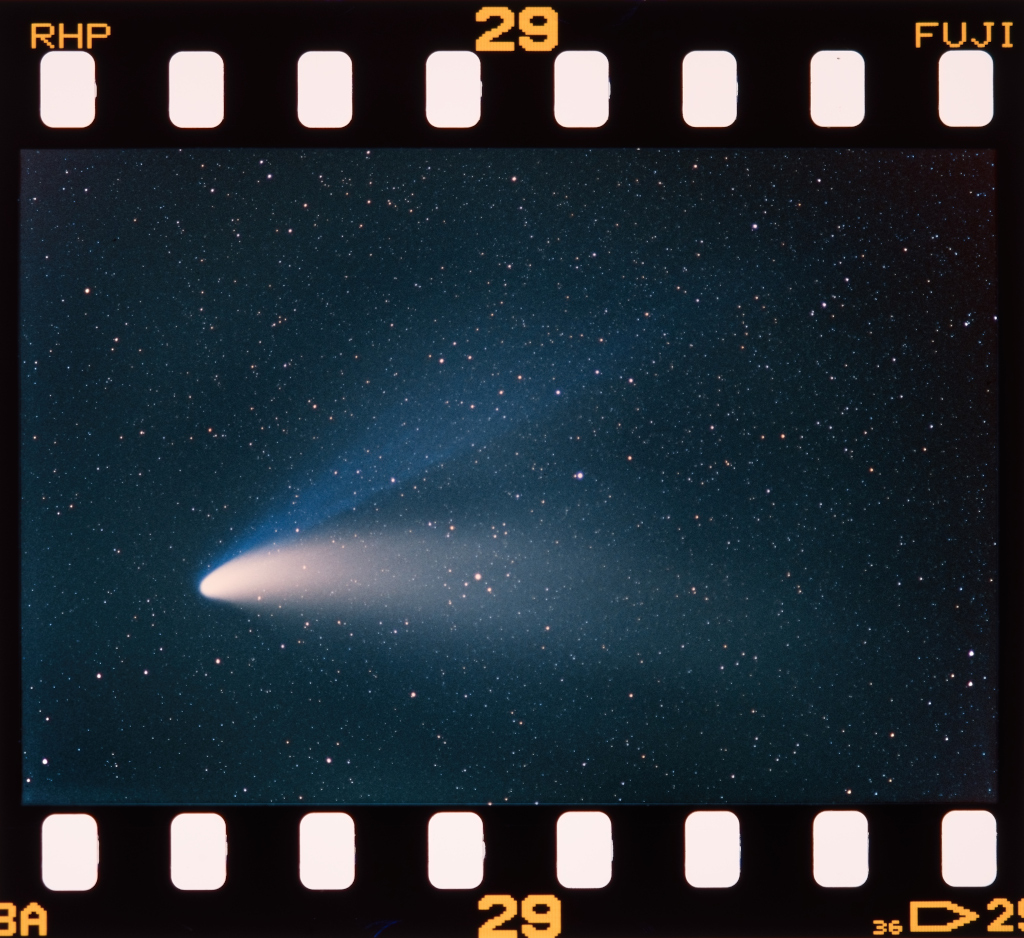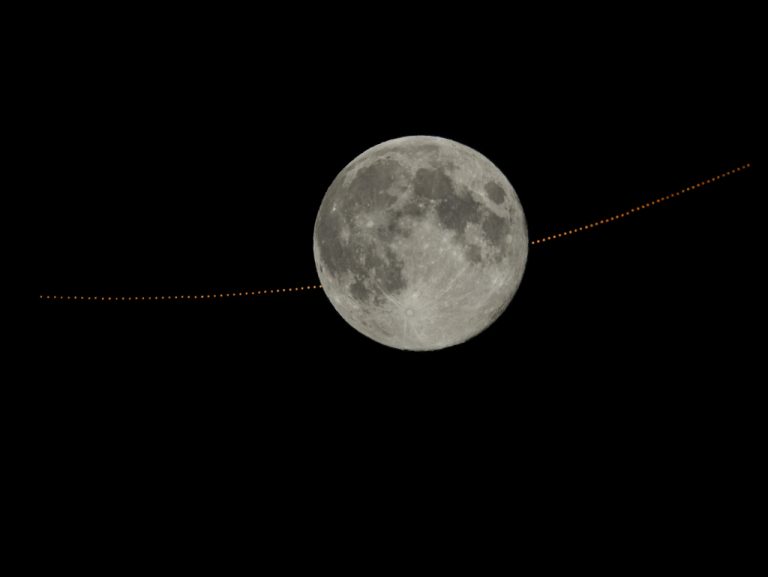2022年4月8日
Hale-Bopp: The Great Comet of 1997
Image Credit & Copyright: Stefan Seip (TWAN)
Explanation: Only twenty-five years ago, Comet Hale-Bopp rounded the Sun and offered a dazzling spectacle in planet Earth’s night skies. Digitized from the original astrophoto on 35mm color slide film, this classic image of the Great Comet of 1997 was recorded a few days after its perihelion passage on April 1, 1997. Made with a camera and telephoto lens piggy-backed on a small telescope, the 10 minute long, hand-guided exposure features the memorable tails of Hale-Bopp, a whitish dust tail and blue ion tail. Here, the ion tail extends well over ten degrees across the northern sky. In all, Hale-Bopp was reported as visible to the naked eye from late May 1996 through September 1997. Also known as C/1995 O1, Hale-Bopp is recognized as one of the most compositionally pristine comets to pass through the inner Solar System. A visitor from the distant Oort cloud, the comet’s next perihelion passage should be around the year 4380 AD. Do you remember Hale-Bopp?
Tomorrow’s picture: planetary pairing
海尔-波普:1997年的大彗星
影像提供与版权: Stefan Seip (TWAN)
说明: 近在25年前,海尔-波普彗星绕过太阳,成为当时地球夜空非常吸睛的景观。这张1997年大彗星的经典影像,数位扫描自原始的35厘米天文摄影彩色正片,摄影的时间是这颗彗星在1997年4月1日通过近日点后的数天。当时所使用的设备为搭载在小望远镜上的相机及长焦镜头,然后经过长达10分钟的手动导引取像,以记录海尔-波普彗星令人难忘的白色尘尾和泛蓝的离子尾。在影像中,其离子尾在北半球星空中伸展的长度超过10度。总结来说,在1996年5月底到1997年9月之间,海尔-波普是一颗裸视彗星。亦名为C/1995 O1的海尔-波普彗星,咸认是穿过内太阳系、组成最原始的彗星之一。来自遥远欧特云的这颗彗星,应该在公元4380年左右会再次通过近日点。你还记得海尔-波普彗星吗?
明日的图片: planetary pairing







